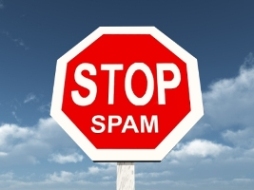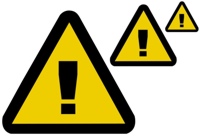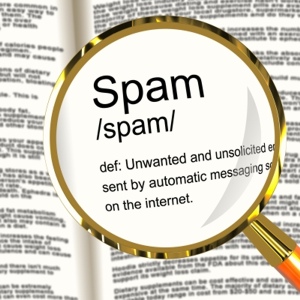|
 How to reduce spam score for your newsletters To secure the success of your newsletters you need to minimize their spam filter score as much as possible. High spam score puts your newsletters at risk of being stopped by spam filters and not getting delivered to your subscribers even though they really want to receive them. High spam scores can also cause that your newsletters - although delivered to their recipients - get classified as spam by the email client and end up in the spam folder. Such newsletters are rarely read. There are a couple of steps you can follow to avoid negative handling of your newsletters by spam filters. In this article we present to you useful tips and solutions that help you to lower your newsletters spam score and increase the chance that the newsletters are delivered to your customers. Three levels of spam filters Emails often have to pass through several spam filters. First, the email/Internet service providers usually have a spam filter that removes the most obvious spam from the mail server. Two such common filters are SpamAssassin and CRM114. Second, several email client software also have built-in spam filters that remove spam email. A good example of such email program is Microsoft Outlook and its Junk E-Mail Filter. Besides these two types of spam filters, most users commonly have an additional anti-spam software installed on their computer. Such anti-spam programs are often included in different anti-virus and firewall packages. Some major manufacturers of such programs are Symantec, McAfee, Trend and F-Secure. Some users buy anti-spam programs separately, for example from one of the companies named above but also from other companies such as Cloudmark and SPAMfighter. How does a spam filter work? Spam programs and spam filters mainly use two basic approaches when assessing whether a newsletter should be classified as spam or not; email filtering based on spam score and email filtering based on so-called "black lists". Filtering based on spam score Anti-spam programs and spam filters try to analyze the content of a newsletter in order to determine whether it is spam or not. In case of finding "suspicious signs", the newsletter receives a spam score-point. The more "suspicious signs" that are found in the newsletter, the higher total spam score it gets. If the spam score exceeds a certain limit, the newsletter is classified as spam and usually ends up in the spam folder instead of the mail inbox. A very high spam score can even cause that the newsletter is deleted immediately. Black lists Black lists (or block lists) contain names of known spam sources. If an email is sent from a known spam source, it will probably be deleted immediately from the server. Some common black lists are Spamhaus Zen and SpamCop.
Below you can find 15 tips that help your newsletters to avoid unnecessary spam score-points: 1. Do not use only images A newsletter containing only one or many images, and no text, usually gets stuck in all types of spam filters. In addition, surveys have shown that about 40% of all computer users have turn off the image view function in their email programs. In other words, when receiving a newsletter with just a picture all they can see is a big cross sign. Such results is neither "informative" nor "selling". 2. Do not use too small amount of text In case that your newsletter contains one image, you cannot afford to use a too small amount of text. Too little text in relationship to an image generates unwanted spam-points for your newsletter. To avoid this you should have at least 4-5 sentences in every newsletter. Moreover, consider those 40% of your clients that have turn off their image view function in their email programs (see our previous tip about this). Provide a text that encourages them to display your image. Remember that even if you have a good ad-picture, it is important to provide an equally good advertising text. In that way you can secure that your advertisement will be seen by a large group of people. 3. Avoid repeating subject line The text in your subject line should not be repeated in your newsletter's body text without modifications. This is especially important for headlines and links. In case you wish to repeat the message of your subject line in the body text, you should rephrase it and give it similar meaning instead. The most important thing is to avoid the text to be identical with the text in your subject line. 4. Do not use too large fonts You should not use font size larger than 3 (12 pt) in your newsletters’ titles and headlines. Usage of larger font size might result in additional spam score points. 5. Do not use Arial 2 (10 pt) in newsletters with images inserted in emails Lot of spam mail has been made of a random text in Arial font size 2 (10 pt) with image(s) inserted directly in the newsletter (embedded in the newsletter). It has been so common that usage of Arial 2 (10 pt) font usually results in a relatively high spam score. Unfortunately, this affects you even if you send out proper newsletters. In order to avoid the risk of getting extra spam points you should always do one of the following: - Avoid using Arial 2 (10 pt) in your newsletters. - Put the image on the web and add a link to the image instead of embedding the image. Note that you do not need to perform both actions, your newsletters will be fine with just one of the above listed measures. 6. Do not use only capitals in your subject line Try to avoid using only capital letters in your subject line as this can lead to higher spam score. Instead, write your subject line with a regularly sized text. 7. Do not use too many different font colors Avoid using too many different font colors in your newsletters as this can results in additional spam points. Moreover, too many different font colors make your newsletter difficult to read. 8. Avoid certain words Some words such as "contact", "offer", "discount", "free" etc. can give you spam points. This applies even if such word is a part of a longer expression, e.g. "contact form". Sometimes can very simple words or word combinations cause a higher spam score. This concerns words that are commonly used in spam emails. Try to avoid it by writing one paragraph at a time and test sending it to see if the text gets through the spam filters. It can be very time-consuming to try afterwards to find out which words or word combinations in your newsletter that result in spam points.  9. Avoid too many
exclamation points 9. Avoid too many
exclamation pointsAn overuse of exclamation marks ( ! ), question marks ( ? ), and similar signs in your newsletter can give additional spam points. This is especially true if you write the signs after each other, like "!!!" or "???". This applies particularly for subject lines and headlines. Even use of different types of apostrophes can result in additional spam points. Try not to use too many signs and special characters in your newsletters. 10. Avoid too many links and too advanced design Using too many links, tables etc. in your newsletter increases the risk of additional spam points. It can be very tempting to create newsletters with an advanced design, especially if you are skilled at HTML or use an advertising agency to develop your websites, brochures etc. Unfortunately, newsletters with such advanced design often get a higher spam point score. In addition, there is a quite big risk that your newsletter will not look correctly as several of your newsletter subscribers may have older versions of email programs. 11. FrontPage, Dreamweaver and Expression Web can result in spam points Be aware that using external HTML editors (such as FrontPage, Dreamweaver or Expression Web) for your newsletters’ creation can sometimes result in additional spam points. Information about what program has been used for creating your newsletter is stored in the HTML code. Some spam filters can detect this and interpret it as a sign for an advertisement. Thus, they add extra spam points for it. The reasoning behind this is that people usually do not use such "heavy" applications when sending an email. Typically, people create an email directly in their email client. In that case there is no information about an external program in the HTML code. However, this information is easy to remove. At the beginning of your newsletter’s HTML code you will often find so called meta tags that are specific for the HTML editor that was used for the creation of the newsletter. By deleting these tags you will remove this information, and spam filters will not "punish" you for using a specific HTML editor. 12. Never use blind copy (Bcc) If you send out your newsletter using the blind copy (Bcc) function in the email client, the email header will not contain a real receiver. Spam filters can interpret this as a sign of a massive mail dispatch, especially if several of the previously listed points are met as well. The outcome of this will then inevitably be additional spam points. Moreover, there is a risk that your newsletter will be perceived as "impersonal" which can downsize the amount of readers. 13. Do not use copy (Cc) Similarly, mailing out your newsletter using the copy (Cc) function in the email client also increases the risk of getting it classed as spam. Additionally, it means giving out a free list of all your email contacts because every recepient also gets a copy of your mailing list (it follows the email). This puts your contacts on huge risk of getting misused, and makes an impression that is neither trustworthy nor reliable. In case that your email contacts end up in the "wrong hands" they will quickly get bombed by massive amount of spam so your clients will be forced to change their email addresses. As a result, your email contact list will gradually become useless and in the worst case it might even come up that it is you who stand behind the email contact leak.
14. Do not use dynamic IP addresses Ideally, you should not send out your newsletter from a server with a dynamic IP addresses. Several spam filters and anti-spam programs can interpret this as a try for constraining the sender tracing and your newsletter can end up with plenty of spam points because of that. 15. Check your IP address Regularly check that your or your Internet service provider's IP addresses has not been caught in one of the largest databases, MAPS and SpamCop, that contain lists of spammers IP addresses.
Related products: SamLogic MultiMailer Other articles More articles are available from the article index page. |
|
| Article written by: Anders Persson | Swedish |









